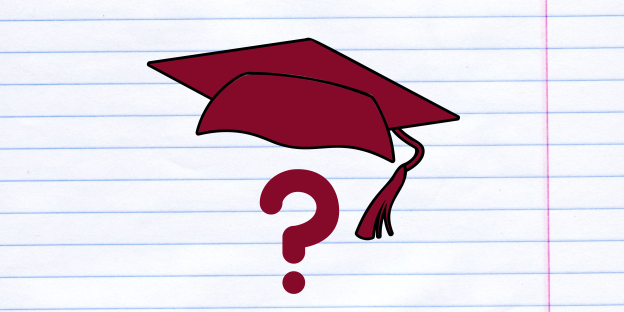Written by Anna Whitaker
Picture this: it’s three weeks into the semester and you’re facing down your first college-level writing assignment. Whether this is a research paper, a Think Piece, or a narrative essay, we’ve got some handy tips and tricks to get you started!
1. Get all the details.
Knowing everything you can about the assignment is going to make things a lot easier in the long run. Details and instructions can be found in several places; usually, they are on the assignment itself in Canvas, as well as the syllabus. Don’t be afraid to reach out to your professor, either. They want to see you succeed – they know everything about the assignment (they’re the ones who made it!) and are more than willing to share the nitty gritty details with you. Here are a few things you’re going to want to know about what you’re writing:
- Format: Does your professor want MLA, APA, or something different?
- Genre: Is this an argumentative research paper or a lab report? Are you writing an editorial piece or a lengthy literary analysis? Understanding the assignment genre will help guide your writing.
- Technical Details: What’s the word requirement? How many sources are you supposed to have?
2. Figure out your topic, and outline it.
This is a key component in the writing process, because without it, you’ll have no idea where you’re going or even where to start! First, you’ll want to brainstorm your topic. What are you going to write about? What appeals to you? What topic has plenty of sources available for you to draw on?
Once you’ve decided, create an outline of what you want your paper to look like. It can be as bare as three or four bullet points, or you can go in-depth with topic sentences for each paragraph and jumpstart your research process by including links to sources. Outlining looks different for everybody – the goal is to have some guidance that can (and will) evolve as you develop your paper.
3. Jump into the writing!
You can start with your introduction, or dive straight into the body paragraphs. Writing doesn’t need to be linear, so go with whatever flow works for you. Remember, your first draft isn’t going to be perfect. The first draft exists so that you can get all your thoughts onto the paper – polishing and editing comes later in the process. As you write, keep the assignment guidelines in mind; your arguments, claims, and use of evidence should align with your thesis (a statement, usually in the introduction paragraph, that makes a claim about your topic and outlines how you’re going to back up that claim).
4. Bonus points: head over to the Write Site before you submit your paper to get advice and feedback from top-tier writers and English students.
The Write Site is a free service open to all Texas Woman’s University students (undergraduate and graduate) that assists with all aspects of writing. They help with big-picture issues (such as structure and argument development) to smaller scale items (like grammar and formatting). You can submit your first first or your final draft. The Write Site can work with whatever you’ve got in a face-to-face or online appointment! Whenever you get stuck, the Write Site and its well-trained writing consultants are a great resource to utilize to help get you past any writing block you’re facing.
College writing may seem daunting at first, but you’ve got plenty of resources behind you to help get you were you need to go. Best of luck!




